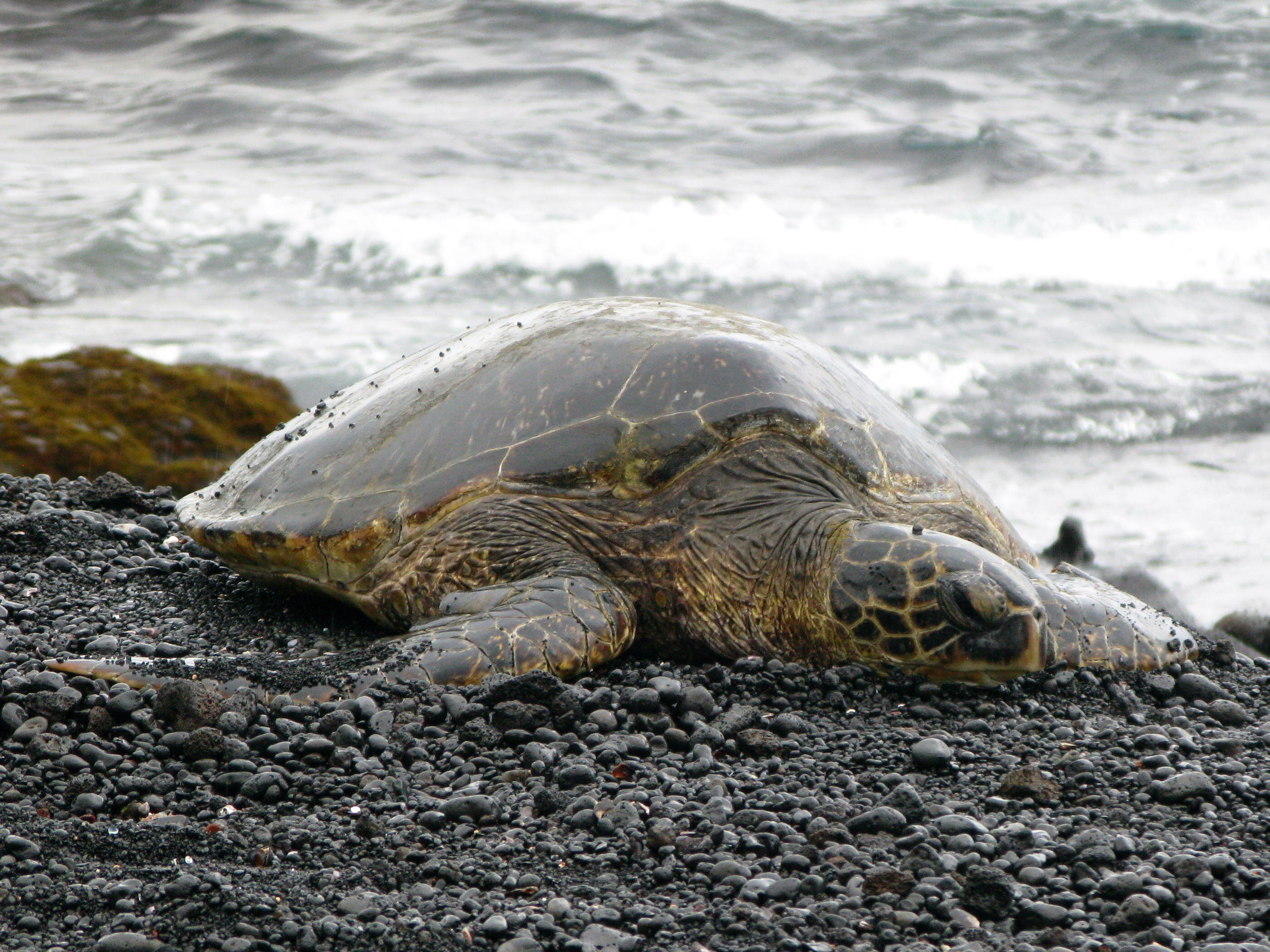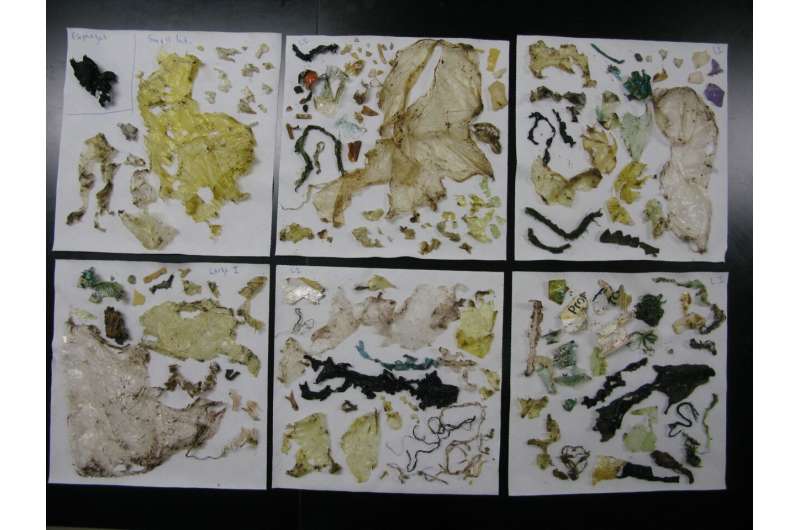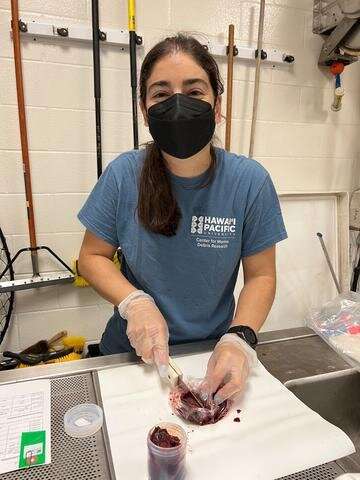by National Institute of Standards and Technology

Potential Bioindicators for Monitoring Plastic Pollution: With an estimated 8 million metric tons of plastic waste escaping to our oceans each year, plastic pollution adversely affects the environment, climate, and even our health. Many plastic products break down in the ocean and are ingested by marine wildlife. Scientists can study these organisms as potential bioindicators to measure how much plastic exists in different ocean regions and help assess the overall health of the marine environment.
To advance these efforts, several research organizations, including the National Institute of Standards and Technology (NIST), have conducted a meta-analysis, in which they statistically analyzed and combined current scientific literature to identify key marine species for monitoring plastic pollution in the North Pacific Ocean. The study provides a systematic framework for collecting data from these marine species to minimize variability in results observed between different organizations. The results will help improve information important to understanding the extent of plastic pollution in the North Pacific Ocean, the effectiveness of plastic reduction measures, and possible impacts on wildlife.
The researchers published their findings in the scientific journal Environmental Pollution.
“The scientific community has an incredible amount of data on which marine species so far are ingesting plastic pollution. It’s imperative to synthesize this data and turn it into knowledge that can help us understand and mitigate this problem,” said Matthew Savoca, a researcher at Stanford University’s Hopkins Marine Station in Pacific Grove, California.
Plastic pollution is a problem that affects all of the world’s oceans. The researchers focused on the North Pacific Ocean because they are part of a working group under a multinational science organization known as the North Pacific Marine Science Organization (PICES) that coordinates research in the region. Site of the “Great Pacific Garbage Patch,” the North Pacific is an ocean region that is one of the most heavily impacted by plastic pollution, further emphasizing the importance of the study.

Conducting an extensive literature review, the researchers used statistical analysis on key information extracted from research articles on a variety of marine wildlife groups, such as invertebrates, fish, seabirds, marine mammals and sea turtles.
The collaboration focused on marine wildlife species that are already known to ingestplastic pollution. “These animals forage in the ocean, ingest the plastic, and bring it back to us. This makes the human job of monitoring plastic pollution easier. We’re making the best use of animals that have already died from a variety of reasons and collecting the data from them,” said NIST researcher Jennifer Lynch.
Using a scoring rubric that was modified from a similar one used by a United Nations working group, the researchers evaluated 352 different marine species and identified 12 as the best potential bioindicators for the North Pacific.
These best bioindicators ranged from the Pacific oyster and long-nosed lancetfish to the green sea turtle and black-footed albatross. Within the highlighted species are a few that were not previously identified as potential bioindicators, such as the Manila clam, multiple anchovy species, and a small seabird known as Leach’s storm petrel.
The criteria for species to serve as bioindicators included a variety of factors, such as their distribution throughout the ocean, both the North Pacific and globally, and whether they are consumed by humans.

“There are a handful of things that make a good bioindicator,” said Savoca. “The first thing is accessibility: Is it easy to get samples of these species? Second, we are looking for species impacted by plastic. We are looking for changes in plastic pollution over time to determine if things are getting worse or better.”
At the same time, Lynch said, “we recognize there is no one species that can cover everything. When sea turtles forage, they might reveal the presence of certain plastics. But bivalves, such as mussels and clams, might be better bioindicators for other plastics near the seafloor.” Also, different species might be experts at detecting the presence of plastics of a particular size, whether it’s visible pieces of plastic or nearly invisible microfibers.
Another key part of the study was developing monitoring plans for these marine species. The authors include recommendations for the frequency of collecting samples (at minimum once per year), number of samples taken, and the best way to collect and store them. The researchers proposed new monitoring plans as well as ones already used by other organizations.
For example, for monitoring sea turtles the authors recommend an existing project called Biological and Environmental Monitoring and Archival of Sea Turtle Tissues (BEMAST) that is a collaboration between NIST, the National Oceanic and Atmospheric Administration (NOAA) and the U.S. Geological Survey (USGS).
The sea turtles monitored through BEMAST were accidentally caught and killed by fishing gear throughout the Hawaiian longline fishery region. Scientists can then conduct postmortem examinations of the turtles’ gastrointestinal tracts to reveal and quantify the plastics that the turtles had eaten for two to three weeks before they died. Using a variety of laboratory techniques, they can analyze these plastics to gather data on color, shape, size, mass, polymer type and markings that indicate the sources of the plastic litter.
For each category of marine species, researchers recommend a detailed monitoring plan so that if other organizations use these methods, there would be consistency in results obtained. In addition, the monitoring plans can be useful to policymakers by serving as potential mitigation steps toward plastic pollution.
This study is part of a series of papers that each focus on different aspects of monitoring plastic pollution quantities in the North Pacific Ocean. Prepared by researchers in the PICES working group, the papers explore plastic pollution in seawater and along shorelines in addition to bioindicators.
For what’s on the horizon, “The next step is to initiate new monitoring programs in addition to keeping existing ones going. We need to think about turning what we propose in the paper into reality,” said Savoca.
Potential Bioindicators for Monitoring Plastic Pollution: Original Article
Stretchable health sensor could improve monitoring of chronic conditions














